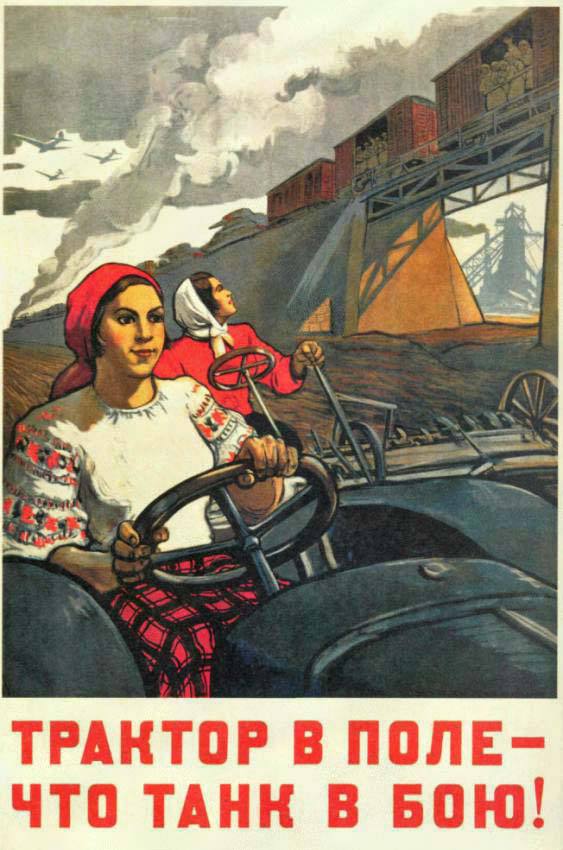
During the 1930s, Russia saw purges throughout different sectors of its culture. Stalin began to eliminate three main groups within the country: the party (Old Bolsheviks), the military, and the security apparatus (the secret police). These three groups were targeted because they represented the biggest threats to Stalin’s power in Soviet Russia. As a result of the Great Purges–which began in 1936– the cultural elite were repressed. Social and aesthetic popularity grew giving way to campaigns against “formalism” and “neo-traditionalism” (also known as the Great Retreat). Formalism was a movement that pushed for the literacy of people in Soviet Russia. It was condemned by the government as “heresy” because, in my opinion, creating a literate and educated public meant that the people could formulate their own political views which would undoubtedly stirred trouble with the Soviet Union. This push away from formalism showed the influence the government had on the culture to stymie any kind of attempt to go against Soviet Russia. It also reiterated Russian nationalism and the same values the Soviets had been pushing all along–technology and mechanization.
The film The Tractor Drivers (1937) was about three men, all from different parts of Russia, who fight in the war against the Japanese on the Manchurian border as tank drivers. Even though the military was heavily targeted during the Great Terror, the film still uses the military to prove Russian strength. The movie features a song called “Three Tank Drivers” which shows the push by the Soviet government to emphasize in society the power of technology and the military (tanks and tractors) and Russian nationalism (three men from different parts of Russia, who all come together to fight a common enemy). This song comes from a movie that was meant to idealize Russian life and society and it embodies the main messages the Soviets wanted to spread.
Three Tank Drivers
The song embodies many of the messages the Soviet Union had wanted to spread for a while. These messages include the strength of Russia, emphasis on technology, and Russian nationalism/pride. The strength of Russia (through the military) is shown in the song in a variety of places. For example, the song mentions: “There they build a barrier for their foe. The region’s tough, courageous, and brave, In the Far Eastern taiga stands An armored strike battalion” (Mass Culture in Soviet Russia, 319). This shows the military strength of the Russians who are able to garner military strength even at the corners of their empire as well as Russian Nationalism mentioning the high character these soldiers possess. Another example of the mention of military strength is shown in this stave: “But the scout’s eye sees all their positions, And the armored strike battalion, Goes into action, spurred on by the order…”(Mass Culture in Soviet Russia, 319). This line from the song shows how ready and apt the military is and their their ability to dominate the Japanese (“samurai”) in their fight in Manchuria. The emphasis on technology is shown in this stave: “The tanks rush by, whipping up a tailwind, And the armor clanks atop the hills. And the samurai come crashing earthwards Under pressure of the fire and steel” (Mass Culture in Soviet Russia, 319). This shows how “fire and steel” can be used to dominate an opponent. The “fire and steel” are presumable the tanks used in the battle and show how technology and mechanization are dominant and important. Russian Nationalism was also on display in the song as shown in the stave: “There they live–and singing guarantees it–As a tight, unbroken family: three fun-loving buddies, Crewmates in a vehicle of war” (Mass Culture in Soviet Russia, 319). This bond (especially because these three men were from different parts of Russia) showed the unity and camaraderie of Russia as well as the nationalism that the Soviet Union wanted to impose on the nation.
This song was very interesting and I’m glad that I had found it because it lead me to do some research on Formalism. Researching formalism was interesting and connected well with the purges of The Great Terror.
Sources:
Tanks, Tractors, and Soviet Russia
Geldern, James Von, and Richard Stites. Mass Culture in Soviet Russia: Tales, Poems, Songs,
“Ivan Pyriev. Tractor Drivers (1939).” YouTube. YouTube, n.d. Web. 18 Oct. 2015.
Movies, Plays, and Folklore, 1917-1953. Bloomington: Indiana UP, 1995. Print.
Nelson, Amy, Dr. “The Great Terror.” Blacksburg. 13 Oct. 2015. Lecture.
“Russian Formalism.” Russian Formalism. N.p., n.d. Web. 18 Oct. 2015.
“Tractor Drivers.” Seventeen Moments in Soviet History. N.p., 18 June 2015. Web. 18 Oct. 2015.
http://i1.wp.com/soviethistory.msu.edu/wp-content/uploads/photo-gallery/pi271.jpg
There’s a lot going on here! I’m not sure I get the connection between Formalism and the Tractor drivers, so I’ll just take them each in turn: The link you found for the definition of Formalism flags an essential source of controversy during the Soviet period — namely the connection between “form” and “content.” Not surprisingly, the (pre-revolutionary / emigre) Formalists focused what formal conventions / devices made literature “literary” (as opposed to “ordinary”). For an ideologically engaged aesthetic like Socialist Realism, this “veneration of form” turned attention away from the content or essence of the work. It’s one of those chicken-egg things with a deadly twist.
As you noticed, “Tractor Drivers” is all about the message! Thinking about the context of the coming confrontation with Germany, the recent purges of the military and the “friendship of peoples” we talked about helps us understand why this song and the film made such an impression.
I think your peace really shows how contradictory the government was in what they expected of the Russian people at the time. They wanted to elevate the Russian people to be better than the rest, but at the same time they held them back by keeping literacy low and focusing on brute strength. At the same time, they were also successful in uniting the Russian people for the war effort.
*piece